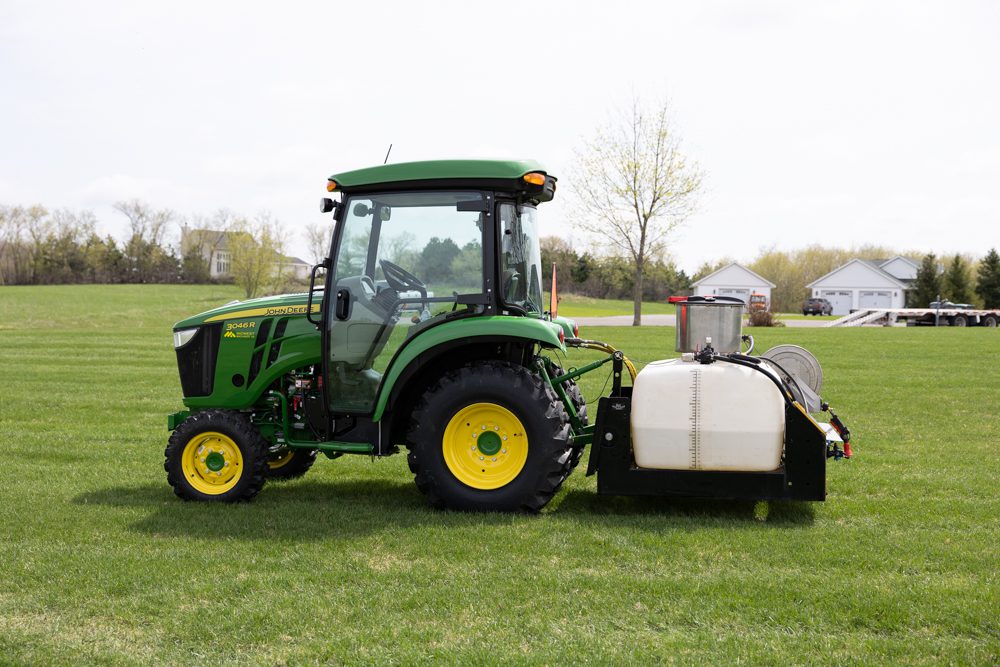Using a broadleaf sprayer on your lawn can be an effective method to control and eliminate broadleaf weeds. However, the timing of application plays a crucial role in achieving the best results. To ensure a healthy and weed-free lawn, it’s important to consider various factors such as the type of weeds, climate, grass type, and the overall health of your lawn.
When are broadleaf weeds most active?
Broadleaf weeds are typically most active during the spring and fall seasons when they experience optimal growth conditions. These seasons are characterized by moderate temperatures and ample moisture, creating favorable conditions for weed growth. It is during this time that broadleaf sprayers are most commonly used.
Timing is crucial when it comes to applying herbicides with a broadleaf sprayer. It’s best to apply the herbicide when the weeds are actively growing and in their younger stages. This ensures that the herbicide is most effective in targeting and eliminating the weeds before they have a chance to spread or produce seeds.
Ideal conditions for spraying broadleaves
Before applying any herbicide, it is important to consider the weather conditions. Ideally, you should choose a day when there is no rain in the forecast for at least 24 to 48 hours. Rain can wash away the herbicide before it has a chance to work effectively, reducing its efficiency. Similarly, windy conditions can cause the herbicide to drift onto desirable plants, causing damage. It’s best to spray on a calm day when there is little to no wind.
Additionally, it’s important to consider the overall health of your lawn before applying any herbicide. A healthy and well-maintained lawn can better withstand the effects of the herbicide and recover more quickly from weed damage. Ensure that your lawn is properly watered and fertilized, and address any underlying issues, such as soil compaction or pH imbalances, before applying the herbicide.
Choosing the right herbicide
The type of grass you have in your lawn also plays a role in determining the timing of herbicide application. Different grass varieties have varying levels of tolerance to herbicides. Therefore, it’s important to read the label of the broadleaf herbicide to ensure that it is safe for use on your specific grass type. The label provides valuable information on application rates and any precautions or restrictions you should be aware of.
Before applying the herbicide, assess the types of broadleaf weeds present in your lawn. Different herbicides are formulated to target specific types of weeds, so it’s essential to choose the right product for your particular weed problem. Identifying the weeds correctly will ensure that you select the appropriate herbicide for effective control.
When applying the herbicide with a broadleaf sprayer, it’s crucial to follow the instructions provided by the manufacturer. The label will provide specific guidelines regarding application rates, timing, safety precautions, and any additional recommendations. Adhering to these instructions will help ensure the effective and safe use of the broadleaf sprayer.
In Short
- The best time to use a broadleaf sprayer on your lawn is during the active growth periods of broadleaf weeds, typically in the spring and fall.
- It’s important to choose a day with favorable weather conditions, avoiding rain and windy days.
- Consider the grass type and ensure that the herbicide is safe for use on your specific grass variety.
- Identify the types of broadleaf weeds present and select the appropriate herbicide accordingly.
- Finally, maintain a healthy lawn and follow the instructions provided on the herbicide label.
By considering these factors and timing your application correctly, you can effectively control broadleaf weeds and achieve a healthy, weed-free lawn.
LiquidRage Broadleaf Sprayer
KAGE Innovation offers a small-batch commercial and residential sprayer that makes spraying broadleaf, weed killer, fertilizer, and brine, among other mixtures, easy. The LiquidRage has an optional broadcast kit designed to pump and spray broadleaf up to 30 feet. It is easily installed on a tractor, skid steer, or UTV in no time, thanks to the patented skid steer attachment plate with a built-in 3-point hitch. The standard kit on the LiquidRage has adjustable nozzles that are designed to spray brine. Whereas the broadcast kit has fan nozzles that are made to spray liquids such as broadleaf. The outside nozzles on the broadcast kit are powered by solenoids. This allows the operator to control how wide their swath is by the flip of a switch. The harness that is included with the broadcast kit is easily installed inside the cab and is mounted by a simple clamp.
To learn more about the LiquidRage click this link that will take you to the LiquidRage webpage.




Recent Comments